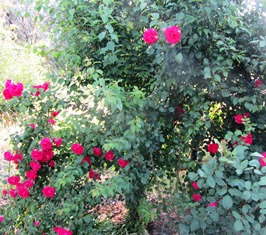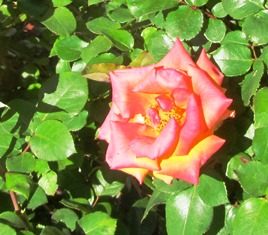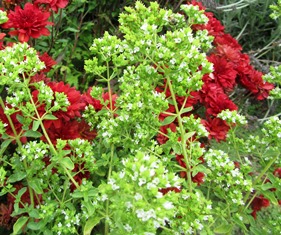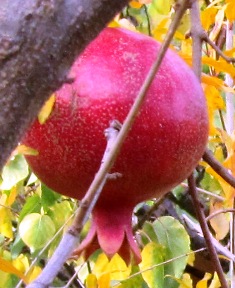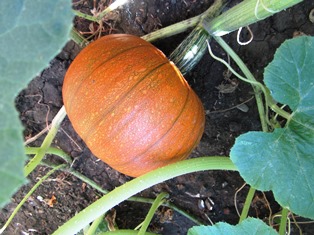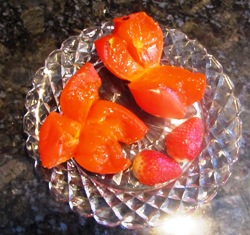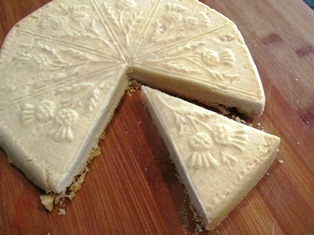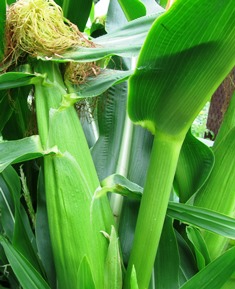Archive for September, 2013
The Narrative of the Rose in My Life
If you could be any flower, which one would you be? My choice would be a rose–not only for its exquisite beauty, intense color, and sweet scent but for its incredible ability to regenerate and for its symbolism in love, war, beauty, and politics–universal experiences that individually or collectively affects our lives . . . or, for the purpose of this musing, my life.
It might have been the Chinese who first cultivated the rose, nearly 5,000 years ago, but there is fossil evidence that the wild rose is far older–at least 35 million years old. Now that’s what I call “staying power.” The rose is a beautiful species, some might say delicate, but I wouldn’t be one of them. The rose regenerates, endures, and thrives. I want to be like that–always–if not in body, at least in spirit.
My fondness for roses surely began when I was a small child living on a farm where roses formed wild hedges or spilled over covered bridges on lovely and lonely dirt roads in rural Missouri that led to farms and country cemeteries and fishing holes.
Every year in May, my Scots-Irish grandmother and mother would cut branches of roses to put into glass canning jars of water, festooned in ribbon or pieces of quilting gingham. With me in hand, they would carry the rose bouquets to graves throughout the county where their loved ones were buried. I watched, not entirely understanding why everyone wasn’t buried in the same patch of ground and whether or not the spirits of the dead would enjoy the roses.
My junior prom was all about yellow roses. The pattern covered the gown my mother and her new husband could scarcely afford and filled the corsage my date brought . . . along with a promise that he would be return and take me to the dance. He didn’t. As it turns out, he took someone else, apparently believing I would be satisfied with roses.
Although I still associate the yellow rose with that disappointment, I am grateful that my love for them has endured (real love always does) while my infatuation with that jerk quickly ended.
While I studied the War of the Roses in my world history book, linkage between the rose and politics came about for me at a garden party years ago for California’s lieutenant governor at the home of a wealthy patron in Hillsborough. As I recall, I was more interested in the variety of roses growing on that vast estate than what was being said in threads of conversations going on around me.
Pink roses on the front porch next to my bedroom were bursting into bloom the spring my brother left for Vietnam, dressed proudly in his marine uniform. The sweet spice-laden scent of their blossoms wafted into my room each night as I said prayers for his safe return.
Years later after being wounded and shipped home, he and his wife attended my wedding. The dinner table was lavishly adorned with red roses, green fern leaves, and white baby’s breath in vases next to fine china and crystal stem flutes of celebratory champagne. My dress of cream-colored satin and my husband’s ivory-colored silk vest under his dark suit created the perfect foil for the red roses, proclaiming our romantic, passionate, undying love for each other.
Hours before my husband died, I massaged his weary legs with rose-geranium oil and prayed for strength. His passing came three weeks after Valentine’s Day. I sprinkled rose petals everywhere in the house in remembrance of his life that had, like the tall, strong canes of a climber, had so intimately intertwined with mine.
I chose Honor, a near-perfect white rose, to plant in remembrance of him, knowing that its pristine blooms and abundant leaves were sustained by roots hidden away in the bosom of the earth. The re-emergence of that rose always reminds me that one’s spirit is nourished by that which is seen and unseen and that the soul is eternal.
After starting life anew on the Henny Penny Farmette, I planted two entire rose gardens and tucked in other rose bushes, including some fifty-year-old wild roses, dug from a friend’s ancestral home.

Strong canes with eye buds can be dipped in rooting hormone and put into the ground to grow a new bush
In one area of the farmette, I’ve planted a single row of white roses commemorating the military service of my great grandfather (who fought the decisive Battle of Pea Ridge in the Civil War), my grandfather (whose wounds in Great War in Europe resulted in his death), my father-in-law who served in the Merchant Marines and World War II (where his ship the Exodus, a.k.a. President Warfield, ran the British blockade of Palestine to rescue 4,500 Jewish refugees), and my son’s father, who would have served our nation had it not been for the heart condition that resulted in his early death.
Some roses I’ve planted, especially those that I’ve started from canes clipped or grafted from other people’s plants, remind me of new life and new beginnings. Somehow, these clippings survive and grow into healthy bushes of roses in many different colors. These roses give me immense pleasure, whether in the garden or in vases in my cottage.
Love and death, wars, and politics will continue in their seemingly endless cycles. Long after I’m gone, members of my family, their children, and grandchildren may forget why certain bushes were planted and in whose names. But perhaps they will remember me as a woman for whom roses symbolized important events in the narrative thread of her life and the plants themselves nourished her spirit.
Plant Culinary Herbs for Yourself and the Honeybees
During my pre-rainstorm walk today around the farmette, I noticed honeybees foraging for nectar in the last blooms of the cosmos, nasturtiums, and rose geraniums.
This is the time of year that the bees search for autumn pollen and find it in the last flowers of a summer garden, but also in the blooms of lavender, heather, thistle, balsam, and eucalyptus.
In the spring, I planted a large pots of culinary herbs on my patio to use in cooking. The mixture of plants included sage, parsley, marjoram, chives, sweet basil, rosemary, English thyme, Greek oregano, Lebanese mint, chocolate mint, lemon bee balm, spearmint, and French tarragon.
If you enjoy using such herbs in autumn and winter soups, teas, or breads, for example, consider planting pots of herbs to grow on the patio or on a shelf in a garden window or on the window sill. The plants will brighten the cooking area on dreary dark days and, with just a snip, add flavor to your culinary creations.
Grow mint in pots if you don’t want it spreading over your yard. The same is true for the Greek oregano and also English thyme and French tarragon–those plants will grow beautifully even though confined in clay pots, old urns, or even half wine barrels.
In early autumn, there is a diminishing amount of nectar (in blooms) available for the bees. This is the known as the nectar gap–when the sources of nectar for the bees are minimal and new sources have not yet appeared. This time of the year to think about planting for yourself and also the honeybees.
Pomegranates and Persimmons Are Ripening Now
The pomegranates are turning from green to a deep red as they should be. It’s the middle of September after all. Some have split open, exposing the red seeds inside the fruits. My neighbor says it’s because of uneven watering. These trees don’t need much water and, I admit, I’ve been lax about running the hose on them.
The seeds are luscious, bursting with sweet-tart flavors. Eat the seeds raw or toss them into a citrus salad with fresh greens, oranges, sweet grapefruit sections, kiwi slices, tangerine sections, crunchy apple and pear slices, and sugared pecans.
While I wait for tomatoes (yes, an old heirloom variety of tomatoes with lots of vines that ripen late season) and the French pumpkins to ripen, I’ve noticed that the persimmons have turned a bright orange, but are still quite firm to the touch.
I planted hachyia persimmons instead of fuyu simply because I like them better. The fuyu persimmons are like small, flat apples. They are crunchy and perfect in salads. The hachyia variety can be eaten fresh or incorporated into baked goods.
If not completely ripened, the hachiya are tart–mouth-puckeringly so. But when they are ripened to perfection, they become soft and sensual like custard. To me, there’s nothing quite like those fruits.
Hasten the ripening of both fuyu and hachyia persimmons in the kitchen in a paper bag. Always look for bright glossy color and a heavy weight to the fruit when selecting fruit to eat or bake.
The hachyia variety adds a pumpkinlike flavor to bake goods as well as additional moisture. The hachyia has earned the moniker of “the baking persimmon.” Try using them in cakes, puddings, breads, and cookies.
Think of pomegranates and persimmons as early autumns special treats. The pumpkins and apples will follow. Then for us Northern California gardeners, the work starts in earnest for preparing beds for our cool season gardens.
Rustic Pluot or Plum Tart with Italian Crostata Crust
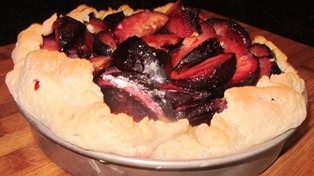
Pluots or plums are first drizzled in lemon juice and dusted with flour, then placed into the tart with bits of butter
The farmer’s market has the dark purple-black plums and pluots in abundance now, so I thought I’d buy a few and whip up a rustic summer tart, Italian style.
I like the rustic tarts with the Italian style crostata crust because they are easy to make and the tart tastes so buttery and flaky. This recipe uses butter and also cream cheese that gives the tart a special lightness. For the filling, I used pluots for this one, but you could also use ripe plums.
To make the dough, I find it easier to just put the ingredients into the food processor with a steel blade and pulse a few times, adding ice water as needed.
Ingredients:
8 ounces cream cheese
2 sticks butter (1 cup)
2 cups flour
½ teaspoon salt
1 teaspoon cold water
6-7 large sweet pluots or dark plums
Juice from ½ medium lemon
2 Tablespoons butter
2 Tablespoons flour
Directions:
Preheat oven to 375 degrees Fahrenheit.
In a food processor with blade, process cream cheese, butter, flour, salt, and water into a ball.
*Roll out on a lightly floured surface in a circle to about ¼ inch thickness and 2-4 inches larger than your tart pan.
Place dough in a tart pan and pre-bake 10 minutes.
Wash, cut, stone, and cut pluots/plums into quarters.
Combine with lemon juice.
Toss with flour. If plums are juicy, you’ll need a bit more flour to absorb all that juice.
Cut butter into pieces and scatter around the plums as you layer the slices in the pan on top of the crostata dough.
Fold extra dough loosely back over the plums; it should not reach the center because you want a rustic look to the baked tart.
Bake for 30-45 minutes until pluots/plums are soft and dough is golden brown.
Serve warm with a dollop of whipping cream or a good vanilla ice cream.
*Avoid over-handling the dough as it will become tough.
Melt-in-Your-Mouth Scottish Shortbread
Warm Scottish shortbread and tea are two of the simple pleasures of life.
Scottish shortbread, that buttery biscuitlike treat that Scottish cooks are famous for serving at teatime, doesn’t require a lot of ingredients; it’s basically flour, butter, and sugar. Of course, the dough can accommodate other additions, for example, bits of dried fruit, chocolate, caraway seeds, lemon zest, chopped dates, and nuts. I like it best plain.
I have many recipes for shortbread. Some are from magazines or books devoted to the subject of Irish or Scottish culinary traditions or foods of the British Isles, acquired during my travels to the lands of my ancestors, namely, Scotland, Wales, and Ireland.
With shortbread, more butter, less flour produces a richer biscuity cookie. It’s helpful to remember the basic 2-4-8 formula, that is: 2 ounces of sugar, 4 ounces of butter, 8 ounces of flour, plus a pinch of salt. Mix together, press into a mold, and bake 45-60 minutes in a 325-degree Fahrenheit oven until golden. Dust with sugar.
The following is my favorite recipe, slightly different. It is pictured above. Feel free to add to it your favorite ingredients.
Ingredients:
1/2 cup powdered sugar
1/3 cup rice flour
2 cups all-purpose flour
pinch of salt
pinch of baking powder
1 cup unsalted butter
Directions:
Preheat the oven to 350 degrees Fahrenheit
1. Put dry ingredients into a mixing bowl.
2. Add butter and cut in with a butter cutter or knives until it is thoroughly incorporated into the dough.
3. Knead the dough 2 minutes on a lightly floured surface.
4. Divide dough into two, roll into balls, and cover both in plastic wrap.
5. Chill for one hour.
6. Knead the dough balls back together to soften and then roll out to about 1/4 inch thickness.
7. Press into a shortbread mold or cut into shapes with a cookie cutter.
8. Bake for 15 to 20 minutes or until the dough is golden and cooked through, if using a mold. For cookies, bake on ungreased baking sheet.
9. Dust, if you like, with fine granulated sugar (also called castor sugar).
Summer Garden in Review
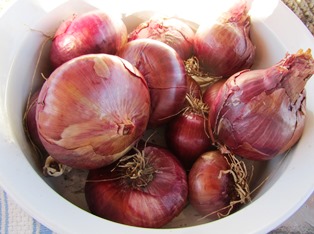
Red onions, grown from sets laid onto prepared beds of soil and barely covered with dirt, produced bulbs all summer
As I prepare and amend planting beds to sow some cool season crops, I am also reviewing my summer garden. I will be the first to admit it was less than a stellar year for my vegetables, except for the peppers, eggplants, summer squash, cherry tomatoes and the sweet French pumpkins for pie, Rouge Vif d’Etampes.
We bought seedlings of heirloom tomatoes and also grew some plants from seed (captured and preserved from last year). The paste tomatoes produced abundantly, but I didn’t get many slicing tomatoes and the cantaloupe and Armenian cucumber plants performed dismally for me. Last summer, those two were star performers in my garden.
The German heirloom Riesentraube (the name means “giant bunch of grapes”) will produce sweet, red 1-ounce fruits, if they ever ripen. The plant’s vines have spread like a wild weed all over the garden and are covered in blooms. The plant is a heavy producer but the fruit is still green. To be fair, I planted this one later than the other heirloom tomatoes, so it may yet surprise me.
Of the blue-black tomatoes we planted, the most notable are Blue Beauty and Indigo Apple. I loved the taste and the thin skin of Blue Beauty but Indigo Apple’s small fruit, despite being described as sunburn and crack resistant, suffered from both in my summer garden.
My patch of sweet summer corn produced lots of ears but quickly became infested with corn aphids that I had difficulty controlling. Finally, I ripped out the whole patch.
We had an abundance of raspberries and strawberries this year. Although we picked strawberries every morning from early May throughout the summer, those strawberries kept on blooming and producing. The blackberries produced lots of vines, but few berries. My blueberry bush went into the compost pile–the soil is too clay and alkaline. I’ll try growing one next year in a wine barrel with acid soil, maybe adding some pine needles, sulfur powder, peat moss, and sawdust mulch.
Our White Genoa fig tree is loaded with ripening figs and the Fuji apple, a few feet away, has branches needing support for the low-hanging, heavy apples. We picked and ate all the sweet summer-ripening Bartlett pears. Now, while we await the fall pears ripening, we’ll keep an eye on the blood oranges from which I hope to make marmalade in late winter when the fruit on the citrus trees ripens.
So, in review, this summer’s garden wasn’t the best. But gardeners, myself included, are eternal optimists, ever dreaming of the next plant, the next season. As English writer and gardener Vita Sackville-West astutely observed, “The most noteworthy thing about gardeners is that they are always optimistic . . . always look forward to doing something better than they have ever done before.”
 Facebook
Facebook Goodreads
Goodreads LinkedIn
LinkedIn Meera Lester
Meera Lester Twitter
Twitter








